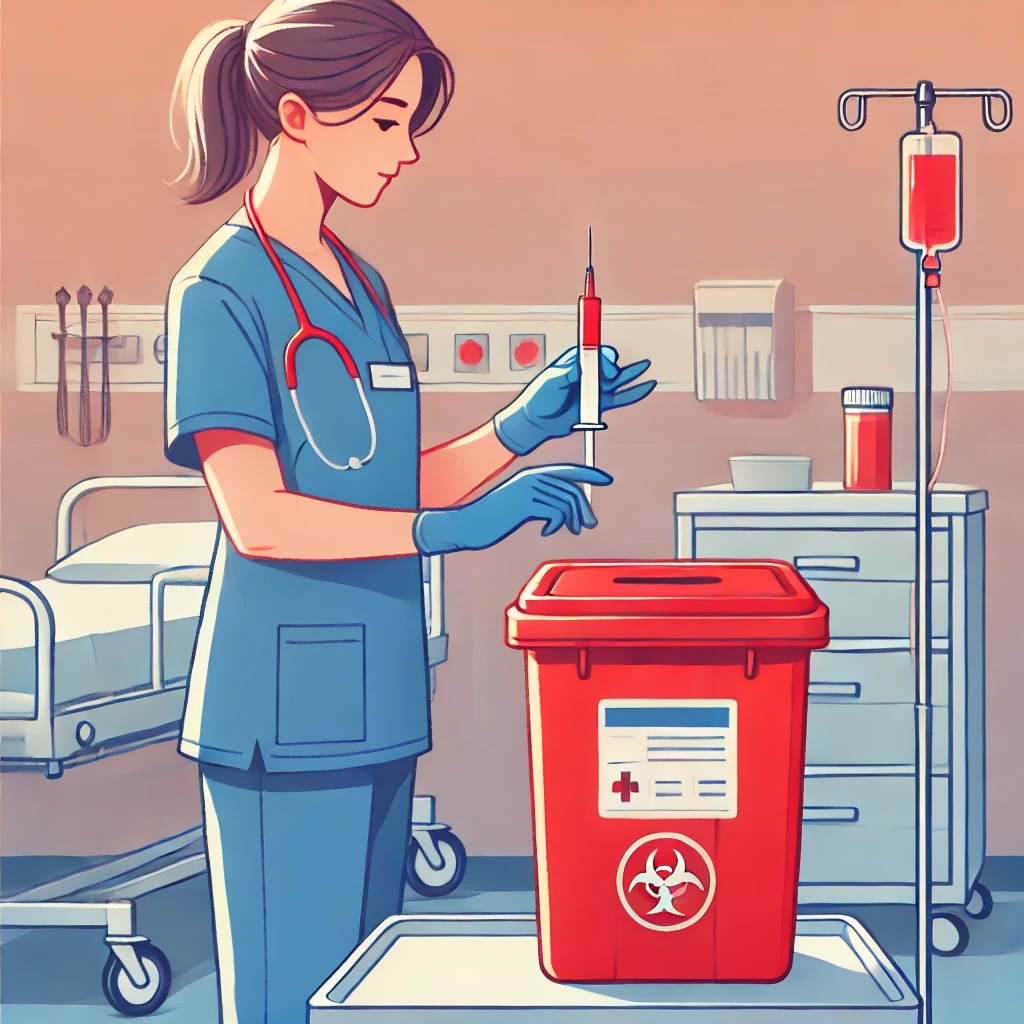Safeguarding Our Caregivers: Common Accidents in Healthcare and How to Prevent Them
Healthcare is a field dedicated to saving lives, but it can also be dangerous for the people who work within it. Healthcare professionals frequently face a variety of industrial accidents, from needlestick injuries to slips and falls, that pose serious risks to their safety. Despite improvements in safety standards, accidents remain a persistent issue. In this post, we’ll explore key statistics, the most common types of accidents, and effective strategies to prevent them.
Key Statistics on Healthcare-Related Industrial Accidents
Healthcare is one of the largest employment sectors in many countries, and it’s also one of the most hazardous. The U.S. Bureau of Labor Statistics (BLS) reports that healthcare workers suffer from non-fatal injuries at rates higher than many other industries, including construction. In 2022:
- Healthcare workers experienced 6.3 injuries per 100 full-time workers, compared to the national average of 2.8 injuries per 100 full-time workers across all industries.
- 40% of reported injuries involved musculoskeletal disorders, often related to patient handling.
- Slip, trip, and fall injuries accounted for nearly 25% of all reported healthcare injuries.
- Needlestick and sharps injuries remain a serious concern, with approximately 385,000 occurring annually among U.S. healthcare workers.
These numbers highlight the substantial risks that healthcare employees face, especially given the fast-paced, high-pressure nature of many healthcare environments.

Common Industrial Accidents in Healthcare
1. Musculoskeletal Injuries
Musculoskeletal injuries, especially back and shoulder strains, are the most common types of industrial accidents in healthcare. These often occur when healthcare workers lift or transfer patients, particularly when using improper techniques or when lifting equipment is unavailable. Nurses and orderlies are especially vulnerable.
2. Slips, Trips, and Falls
Healthcare environments can be chaotic, with wet floors, obstacles, and crowded spaces. Slips, trips, and falls are frequent, whether due to spills in patient rooms or uneven flooring in high-traffic areas such as hallways or emergency departments.
3. Needlestick and Sharps Injuries
One of the most significant hazards in healthcare is needlestick and sharps injuries. These injuries occur when a healthcare worker is accidentally punctured by a needle or sharp object. They pose the risk of serious infections, including HIV, hepatitis B, and hepatitis C.
4. Exposure to Harmful Substances
Healthcare workers are often exposed to harmful chemicals, such as disinfectants, anesthetic gases, and hazardous drugs, during their daily tasks. Inadequate protection or accidental spills can lead to respiratory issues, skin irritation, or chemical burns.
5. Violence in the Workplace
Verbal and physical violence is a growing concern in healthcare settings. According to the Occupational Safety and Health Administration (OSHA), healthcare workers are four times more likely to experience workplace violence than other workers in private industry. These incidents can range from verbal threats to physical assaults, especially in emergency rooms, psychiatric units, and long-term care facilities.
Prevention Strategies
While the healthcare industry faces unique challenges, there are several strategies that employers and employees can implement to prevent accidents and injuries.
1. Ergonomic Training and Equipment
Proper training in patient handling techniques is critical to preventing musculoskeletal injuries. Facilities should also invest in ergonomic equipment, such as mechanical lifts and transfer aids, to reduce the strain on workers.
2. Slip, Trip, and Fall Prevention
Regular maintenance of floors, the use of wet-floor signs, and ensuring that hallways and patient rooms are free from clutter can help reduce slip, trip, and fall injuries. Proper lighting and footwear with non-slip soles are also effective preventive measures.
3. Needlestick Safety Devices
The use of safety-engineered needles and sharps, such as retractable syringes and self-sheathing needles, significantly reduces the risk of needlestick injuries. Additionally, proper disposal of sharps in puncture-resistant containers is essential.
4. Chemical Safety Protocols
Healthcare facilities must establish clear protocols for the safe handling, storage, and disposal of hazardous chemicals. Workers should be provided with appropriate personal protective equipment (PPE) and training on how to manage chemical spills or accidental exposures.
5. Workplace Violence Prevention Programs
A zero-tolerance policy towards workplace violence, coupled with training in de-escalation techniques, can help reduce incidents. Installing security systems, panic buttons, and providing adequate staffing, particularly in high-risk areas, also enhances worker safety.
Conclusion
Industrial accidents in healthcare are a serious concern, but they can be significantly reduced with the right preventive strategies in place. By investing in proper training, equipment, and safety protocols, healthcare facilities can protect their workers from common injuries, ensuring a safer and more productive work environment. Prioritizing healthcare worker safety not only benefits employees but also enhances the quality of care patients receive.
Reducing the risk of accidents should be a priority for healthcare organizations, ensuring that the people who dedicate their lives to saving others can work in an environment that prioritizes their health and well-being.
Note: It is important to report all accidents, even minor ones, so that they can be investigated and prevented from happening in the future.